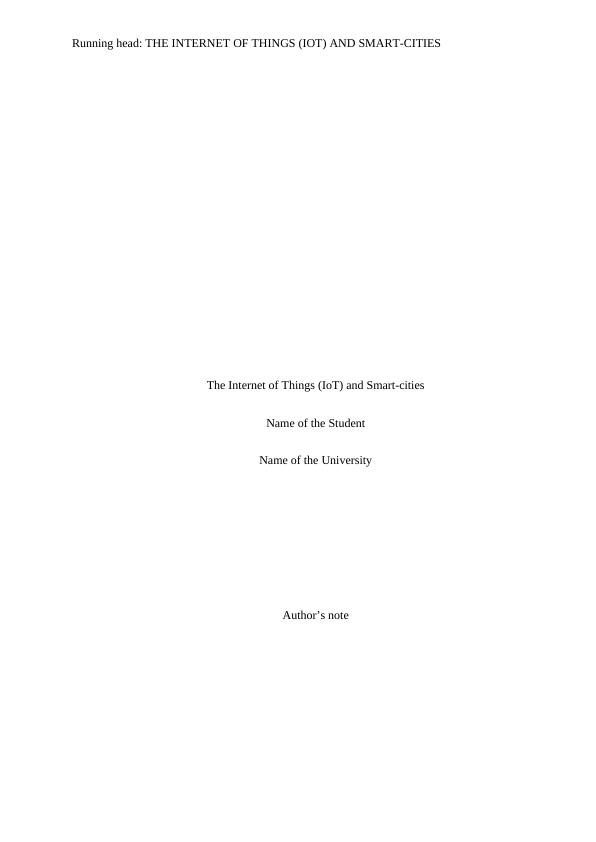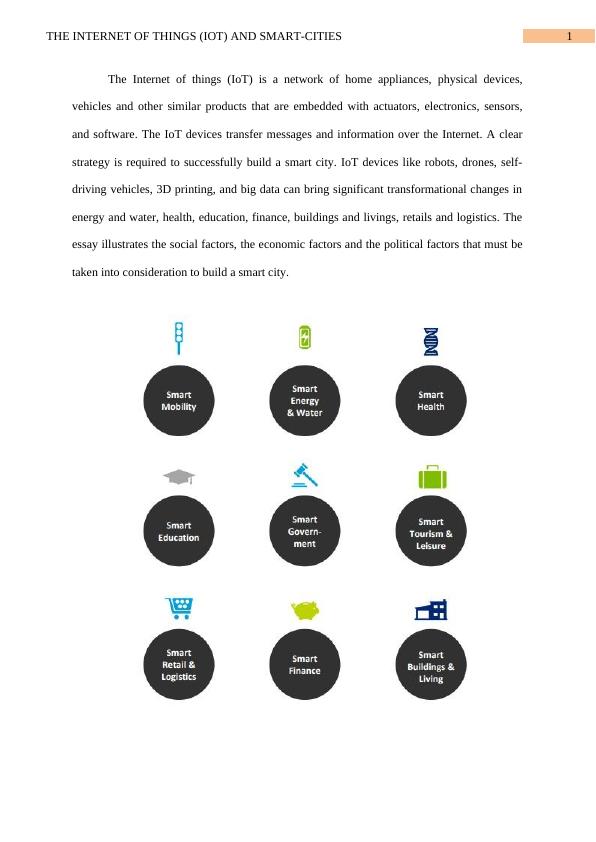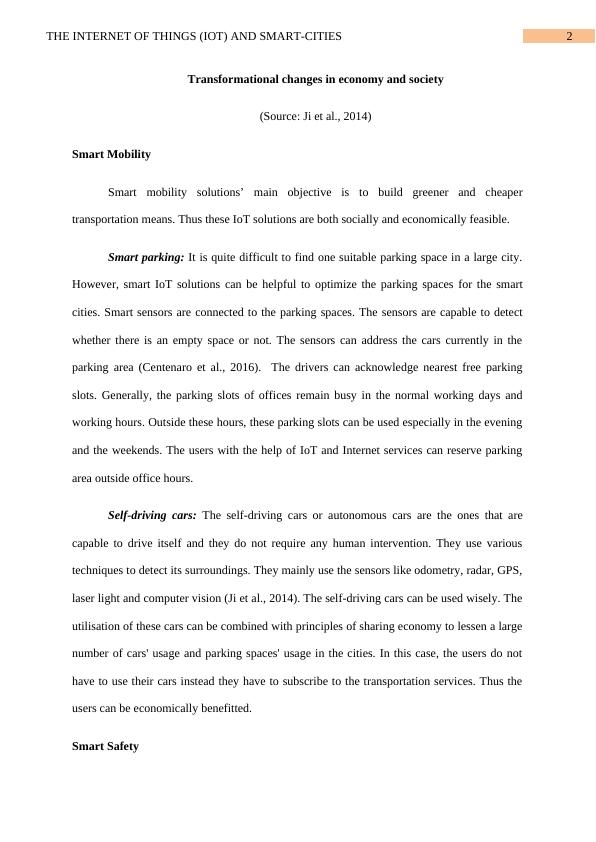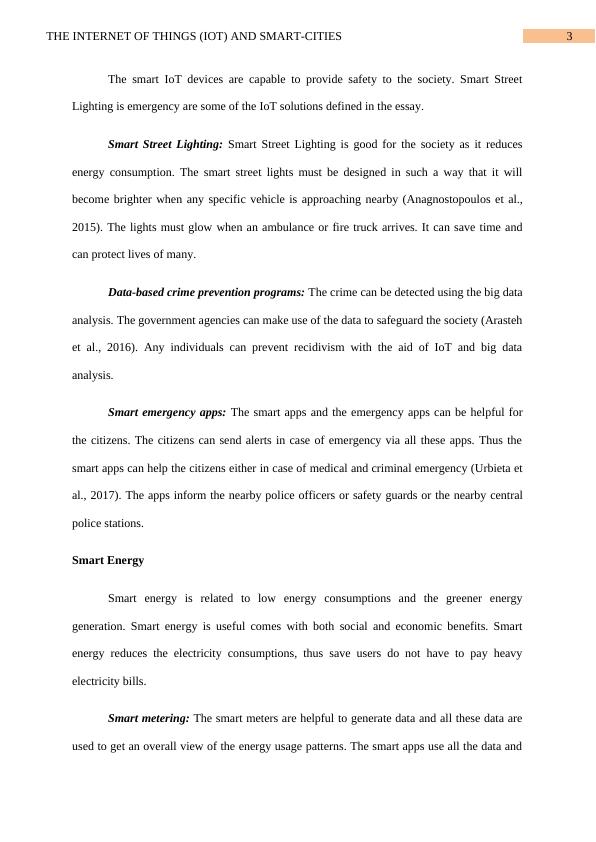The Internet of Things (IoT) and Smart-cities
16 Pages4338 Words316 Views
Added on 2023-06-15
About This Document
This essay explores the impact of IoT on smart-cities and how it can transform various sectors like energy, water, health, education, finance, buildings, and logistics. It discusses the social, economic, and political factors that must be considered to build a smart city.
The Internet of Things (IoT) and Smart-cities
Added on 2023-06-15
ShareRelated Documents
End of preview
Want to access all the pages? Upload your documents or become a member.
BIT 101 - Internet of Things and Its Applications
|4
|1210
|86
IoT in Smart Cities
|9
|2801
|430
Internet of Things for Smart City
|26
|2061
|285
IoT Smart City: Features, Challenges and Background
|5
|893
|161
IoT Smart City: Challenges and Solutions
|2
|926
|335
Internet of Things in Smart cities - Assignment
|5
|987
|36




